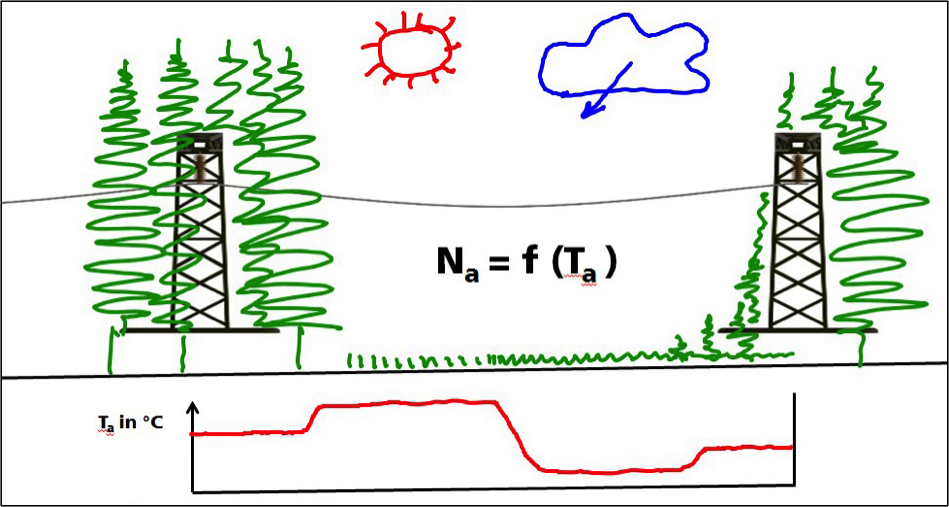Ampacity Optimization
ASTROSE was developed to increase the capacity of overhead lines (current capacity, ampacity) in high and maximum voltage grids. This is achieved by monitoring the current line tilt in each grid section.
The maximum capacity of overhead lines depends on two essential factors:
- A minimum distance of the individual lines from the ground (minimum elevation).
- Constant line temperatures at a level suitable for the line in question (maximum line temperature).
ASTROSE – Monitoring Concept
The ASTROSE system assumes that the actual (real) tilt is measured precisely in each grid section.
If that tilt is lower than the maximum tilt threshold, more power can be fed into the grid until the threshold is reached.
This monitoring concept makes defining the right ampacity at given environmental conditions much more accurate. The environmental temperature, sun exposure, wind sheer, and temperature increases caused by power throughput in the line have an immediate effect on line tilt. This makes the line tilt an integral parameter for determining ampacity.
ASTROSE – Section-Specific Tilt Monitoring
Sun, wind, and air temperature influence power lines in woods differently when compared to power lines placed in open fields. The section-specific monitoring by ASTROSE sensor nodes even makes it possible to account for such locally specific conditions. The maximum ampacity can be defined for each grid section. The grid section with the lowest maximum ampacity then acts as the parameter for controlling the entire grid.

